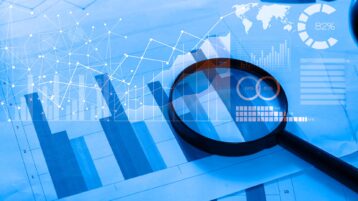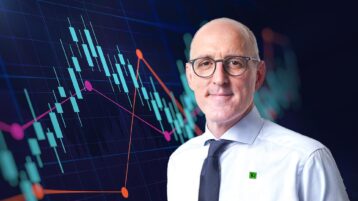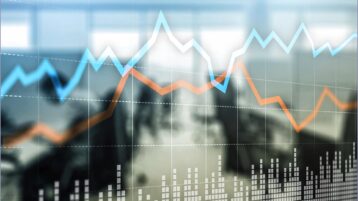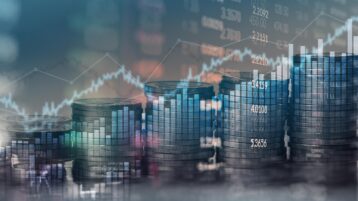The robust recovery from the pandemic recession has helped push U.S. inflation to a multi-decade high. Anthony Okolie speaks with Vikram Rai, Senior Economist, TD Bank, about the urgency of the Federal Reserve to try to bring down inflation, and the likelihood of achieving a “soft landing.”
[MUSIC PLAYING]
- Vikram, you recently wrote a great report on the cost of the Fed being behind the curve as it tries to tame what's been really accelerating inflationary pressures. First, can you explain, what do you mean by the Fed being behind the curve?
- Thanks, Anthony. Sure thing. So behind the curve just means that the Fed-- or any central bank, really-- hasn't raised interest rates fast enough to keep up with inflation. I'm sure you've heard people say this phrase a lot since the end of last year.
And the reason for that is that the inflation-- it's been above the Federal Reserve's target for over a year now. And through a lot of that time, the message from the Fed was that there wasn't a lot of concern. So the question I wanted to ask in this report is that if this really is the case, then what does it look like for the Fed to try to catch up from being behind the curve? And how hard could it be?
- OK. So what's behind the market perception that the Fed is behind the curve in fighting inflation? So in the backdrop of this, keep in mind what I just mentioned. It's been over a year. We've had high inflation. It's been above the Federal Reserve's target for 13, 14 months now.
Beyond that, I think that you can point to two factors that are driving this perception. So one-- the Fed has been surprised more than a few times over the past year. It's not just that inflation's been high but that it's been a surprise. The easiest way to fall behind the curve, if you think about it, is to make decisions, to set policy expecting weaker inflation than is coming, and that's one of the things that happened last year.
Second-- I'm not going to call it confirmation, but I think you've seen some recognition of this from the Fed themselves. They've quickly shifted their tone this year, and markets have taken that seriously. And now everyone is expecting to see interest rates rise a lot more quickly now than we all were six months ago.
- And you mentioned in your report that the Fed may have to act more aggressively if expectations become less anchored. What do you mean by that?
- Yeah, that's a really interesting question. That's actually one of the reasons I wanted to write this report in the first place. I find the process that drives inflation deeply fascinating. And here, what we're talking about is that-- one of the big things about inflation is that it can become a self-fulfilling prophecy.
If everyone expects inflation to be high next year, they'll start acting like it this year. And so businesses will be planning to raise their prices, their suppliers will be planning to raise their prices, people will start to think they have to look for higher-paying jobs or they're going to fall behind inflation. And once those feelings and expectations set in, it's really hard to fight. And that's what it means for expectations to become unanchored.
- Now there's some concerns that the Fed might overshoot in trying to tame inflation with its aggressive interest rate policies and cause a recession. How likely is that scenario?
- I think that people throw around the R-word a lot and they treat it like a binary outcome. But the truth is that within the world of possible recessions, there's a wide range of things that could happen. Something fairly gentle, like the 2001 recession, where you had weak growth for very few quarters is a possibility. Something like the 1990 or 1991 cycle, which I mentioned in the report, is also a possibility.
If you ask me, I think the more likely possibility is that you have a prolonged period where growth is relatively weak, but you don't hit the technical definition of recession. You're just below the full potential growth of the economy for maybe a year, but you never actually contract the economy, which is what a recession means.
- And against that backdrop, recently, the Fed's favorite inflation gauge came in and it actually eased in April. I want to get your thoughts. Do you think that this is a sign that we've reached peak inflation in the US?
- I definitely think the April inflation data was an encouraging sign, given where we are today. We saw headline and core measures ease, compared to last month, and some of the big drivers in recent months, like energy, also really eased off. But I want to stress this-- one data point isn't a trend. I think we'll all want to keep our eyes on the next couple of months before declaring peak inflation is behind us.
- So bottom line, what's your outlook on the Fed achieving a soft landing for the US economy?
- Bottom line, no matter how you look at it, it's going to be challenging, and the Federal Reserve definitely has its work cut out for itself. But as long as we don't all convince ourselves that high inflation is here to stay forever, then I think that my conclusion is that the challenge is manageable, and they've taken the right steps so far to course correct.
- Vikram, thank you very much for joining us. Thanks a lot, Anthony. Pleasure to be here.
[MUSIC PLAYING]



























